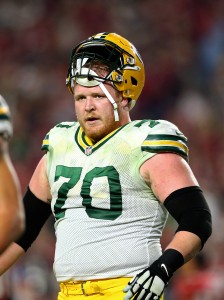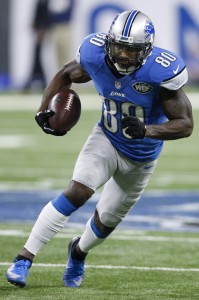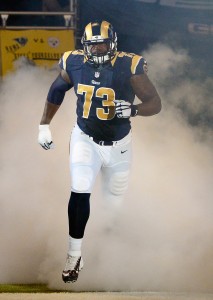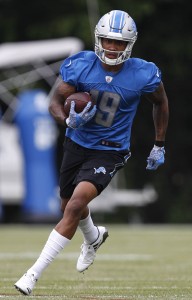Although the Lions finished 9-7 and claimed a NFC Wild Card slot, underlying metrics show Detroit wasn’t as good as its record. Pro Football Reference calculates expected wins and losses based on points scored and points allowed, and the Lions were closer to a seven- or eight-win club based on those numbers. Detroit finished 27th in the NFL in DVOA, worse than clubs such as the Jaguars, Bears, and Chargers, none of whom came close to a postseason appearance.
Still, the Lions presumably still believe they’ll contend with the Packers and Vikings for the NFC North in 2017, and had several obvious areas of focus to attend to this offseason. Let’s take a look at how they did:
Notable signings:
- T.J. Lang, G: Three years, $28.5MM. $19MM guaranteed.
- Ricky Wagner, T: Five years, $47.5MM. $17.5MM guaranteed.
- Akeem Spence, DT: Three years, $9MM. $3.5MM guaranteed.
- Paul Worrilow, LB: One year, $3MM. $2.75MM guaranteed.
- D.J. Hayden, CB: One year, $3.75MM. $2.25MM guaranteed. $1.5MM available via incentives.
- Cornelius Washington, DL: Two years, $5.825MM. $1.5MM guaranteed.
- Khyri Thornton, DT: Two years, $3.3MM. $325K guaranteed.
- Darren Fells, TE: One year, $1MM. $100K guaranteed.
- Jordan Hill, DT: One year, minimum salary benefit. $85K guaranteed.
- Nick Bellore, LB: One year, minimum salary benefit. $80K guaranteed.
- Matt Asiata, RB: One year, $840K. $60K guaranteed.
- Armonty Bryant, DE: One year, minimum salary benefit. $40K guaranteed.
- Don Muhlbach, LS: One year, minimum salary benefit. $40K guaranteed.
- Cyrus Kouandjio, T: One year, $800K. $35K guaranteed.
- Tony Hills, T: One year, minimum salary benefit. $10K guaranteed.
- Bruce Gaston, DT: Two years, $1.32MM.
- Ego Ferguson, DT: One year, $615K.
- Keshawn Martin, WR: One year, minimum salary benefit.
The Lions’ offensive line wasn’t a success in 2016, as the unit ranked 31st in adjusted line yards and 18th in adjusted sack rate, so general manager Bob Quinn made upgrades to Detroit’s front five the focal point of the 2017 offseason. The first step was swapping out right tackle Riley Reiff for free agent Ricky Wagner, whom the Lions made the highest-paid right tackle in the NFL (not counting Lane Johnson, who was paid like the Eagles’ left tackle of the future). With Reiff in tow, Detroit averaged only 2.93 yards on rushes to the right side, according to Football Outsiders. Baltimore, Wagner’s former employer, averaged 4.62 running to the right, meaning improvement should be on the way in the Motor City.
Wagner wasn’t the only addition to the right side of the Lions’ offensive line, however, as the team also signed T.J. Lang to replace Larry Warford at right guard. Not only did Detroit land one of the league’s best guards in Lang, but it stole him from a division rival, weakening the Packers’ line in the process. In order to ink Lang, who reportedly narrowed his free agent choices to Detroit, Green Bay, and Seattle, the Lions guaranteed two-thirds of his $29MM contract, an unprecedented total. Lang, 29, missed three games with injury last season and is now recovering from January hip surgery, but he should be available for training camp.
Darren Fells will be lining up next to Wagner and Lang on the Lions’ front five, and the veteran tight end will essentially act as a sixth offensive lineman on many plays. Fells, whom Detroit signed after he was non-tendered by the Cardinals, managed only 14 receptions a season ago, but uses his 6’7″, 280-pound size as one of the league’s best blocking tight ends, both in the run and pass game. His presence should allow the Lions to split Eric Ebron out wide in more creative formations.
Although Detroit has improved its blocking, that doesn’t mean free agent addition Matt Asiata will suddenly become more effective. Over the past three years, Asiata has been among the league’s most inefficient backs. Of the 49 running backs who have managed at least 250 carries since 2014, Matt Asiata ranks next-to-last with a 3.45 yards per carry average. Last season, Asiata placed in the bottom-10 among backs in both DVOA and DYAR, Football Outsiders’ efficiency metrics. Not guaranteed a roster spot, Asiata shouldn’t be part of Detroit’s Week 1 squad unless an injury strikes.
On the defensive side of the ball, the Lions surprisingly didn’t target any high-profile free agents after the team ranked dead last in defensive DVOA, instead opting to patch over the unit with low-cost additions. In that vein, Detroit signed defensive linemen Akeem Spence and Cornelius Washington, and it’s difficult to see either providing much of an impact next season. Spence, particularly, ranked 123rd of out of 125 qualified interior defenders, per Pro Football Focus, which gave Spence horrible marks against the run. Washington, on the other hand, earned good scores as a pass-rusher, meaning he’ll likely contribute in sub packages.
Both of Detroit’s linebacker signings — Paul Worrilow and Nick Bellore — have recent starting experience, but it wouldn’t be a surprise if the duo spends more time on special teams than as regular players on the Lions’ defense. Worrilow and Bellore each played more than 40% of their previous club’s special teams snaps, and Quinn has shown a willingness to pay for special teams aptitude, as evidenced by the signing of Johnson Bademosi last offseason and the extension of Don Carey in December. Detroit’s special teams unit finished sixth in DVOA in 2016 after ranking 13th and 31st in the two years prior.
After fielding the league’s worst pass defense last year, the Lions’ only free agent signing in the secondary was former first-round bust D.J. Hayden. Taking a chance on a former 12th overall selection is never the worst idea, but given Detroit’s immediate needs in the defensive backfield, the club should have gone after more known commodities. Jason McCourty, Davon House, and Morris Claiborne all signed for similar money as Hayden, and I’d take them all over the former Raider.
Notable losses:
- Joique Bell, RB
- Anquan Boldin, WR
- Jon Bostic, LB
- Michael Burton, FB: Waived
- Rafael Bush, S
- Josh Bynes, LB
- Stefan Charles, DT
- Clay Harbor, TE
- Asa Jackson, CB
- DeAndre Levy, LB: Released
- Matthew Mulligan, TE
- Dan Orlovsky, QB
- Riley Reiff, T
- Andre Roberts, WR
- Devin Taylor, DE
- Larry Warford, G
- Tim Wright, TE
Riley Reiff and Larry Warford are both competent players, drafted and developed by the Lions, and should provide value to their new clubs (the Vikings and Saints, respectively). But there’s no question Detroit made the right move in letting both go in order to sign Ricky Wagner and T.J. Lang. Wagner, notably, is a superior player to Reiff, and received $2.25MM less per season and $8.8MM less in guarantees. Instead of paying for familiarity, the Lions wisely chose to upgrade their offensive line with external additions.
While he’s not technically a “loss” just yet, Anquan Boldin doesn’t appear likely to re-sign with the Lions (despite the club maintaining that it would be open to retaining the veteran receiver). Acting essentially as an undersized tight end, Boldin managed 97 targets and eight touchdowns in 2016, his 14th NFL campaign. While he’d be a welcome addition to the 2017 Detroit roster, Boldin may want to sign with a club closer to his Florida residence, and might be willing to wait for the right deal to come along.
None of Detroit’s other losses on offense should overly affect the makeup of the roster, although the team will need to find another return specialist after allowing Andre Roberts to sign with the Falcons. Roberts averaged 22.6 yards on kick returns, 12.3 yards and punt returns, and scored tow touchdowns in the return game, so he’ll certainly be missed. Reserves such as T.J. Jones and Jace Billingsley look the like favorites for the role, although fifth-round rookie Jamal Agnew should also be in the mix.
Given the state of the Lions’ defense in 2016, allowing nearly every free agent on that side of the ball wouldn’t have been a bad idea. Releasing DeAndre Levy was probably a tough decision, however, as he was among the NFL’s best linebackers as recently as 2014. But the 30-year-old simply couldn’t stay healthy, as he’d appeared in only six games over the past two seasons. Levy recently underwent another knee surgery and could be planning an injury grievance against the Lions, claiming that Detroit released him while he was still dealing with a health issue.
There’s a case to be made that defensive end Devin Taylor was the league’s worst full-time starting defensive lineman in 2016. Among DLs that started all 16 games, Taylor ranked next-to-last in approximate value, Pro Football Reference’s catch-all metric, and graded as the second-worst edge defender in the league, per PFF. The 27-year-old Taylor has never been able to use his 6’7″ height to his advantage, and has posted only 15 sacks in four NFL seasons. He garnered only $40K in guarantees as part of a minimum salary benefit contract with the Giants.
Trades:
- Acquired a 2017 third-round pick (No. 96; Kenny Golladay) and a 2017 fourth-round pick (No. 124; LB Jalen Reeves-Maybin) from the Patriots in exchange for a 2017 third-round pick (No. 85; OL Antonio Garcia).
- Acquired T Greg Robinson from the Rams in exchange for a 2018 sixth-round pick.
After learning left tackle Taylor Decker would be sidelined for several months (and possibly miss regular season action), the Lions took a two-pronged approach to solving their blindside problem, and both tacks involved targeting pedigree over production. First, Detroit signed former second-round pick Cyrus Kouandjio, whom the Bills waived after he involved in a bizarre incident with police in April. Second, the Lions sent a future seventh-round selection to Los Angeles for former No. 2 overall choice Greg Robinson.
Both Kouandjio and Robinson are expected to compete for time at left tackle, but I’d put my money on Robinson. The Auburn product was an excellent player at the collegiate level, and although that acumen has never transferred to the pros, there’s reason for optimism. Former Lions offensive lineman Geoff Schwartz penned an excellent piece for SB Nation detailing why Robinson is an outstanding for for Detroit’s scheme, noting Robinson “can use his quickness and strength to overwhelm defenders at the line of scrimmage in the pass game.”
Lions general manager Bob Quinn, a disciple of trade-friendly Bill Belichick, has shown a willingness to make deals during his short tenure in charge of Detroit’s personnel office. Quinn & Co. took chances on Johnthan Banks and Jon Bostic last year, and even worked out a player-for-player trade with the 49ers, sending Jeremy Kerley to San Francisco for Brandon Thomas. Not every swap will work out (all three of Quinn’s swings were arguably failures), but it’s refreshing to see a GM use other avenues of player acquisition.
Draft picks:
- 1-21: Jarrad Davis, LB (Florida)
- 2-53: Teez Tabor, CB (Florida)
- 3-96: Kenny Golladay, WR (Northern Illinois)
- 4-124: Jalen Reeves-Maybin, LB, (Tennessee)
- 4-127: Michael Roberts, TE (Toledo)
- 5-165: Jamal Agnew, DB (San Diego)
- 6-205: Jeremiah Ledbetter, DT (Arkansas)
- 6-215: Brad Kaaya, QB (Miami)
- 7-250: Pat O’Connor, DE (Eastern Michigan)
While the Lions didn’t use free agency to upgrade its porous defense, the team did find several players in the draft who could become immediate starters. Viewed as a ready-made ‘backer, Jarrad Davis is already calling defensive plays and will take over in the middle from day one, where he’ll attempt to become Detroit’s version of Jerod Mayo or Dont’a Hightower. Teez Tabor, meanwhile, was thought to be surefire first-rounder before slow 40-yard dash scores tanked his stock, but he could potentially see time in nickel packages during his rookie campaign.
Third-round receiver Kenny Golladay is already a favorite of many fantasy analysts — numberFire’s J.J. Zachiarson thinks Golladay will be labeled “Babytron” by Week 5 — and the opportunity should certainly be there for the former Northern Illinois pass-catcher. Detroit use three receivers on roughly 73% of offensive plays in 2016, which was about 13% above league average. If Anquan Boldin isn’t re-signed, the Lions will have a massive void at their third wideout spot. Mike Clay of ESPN.com projects Golladay for 71 targets and 43 receptions.
In his “Way Too Early” 2017 mock draft (published just days after the 2016 draft), Todd McShay of ESPN.com sent Brad Kaaya to the 49ers with the second overall pick of the entire draft. Just a season later, Kaaya fell to the sixth round, but his collegiate statistics didn’t change much from year-to-year. Kaaya actually improved his completion percentage, adjusted yards per attempt, touchdown-to-interception ratio, and passer rating. Still, Lance Zierlein of NFL.com says Kaaya’s “accuracy and deep ball placement can be sketchy,” and he’s not a lock to make Detroit’s 53-man roster.
Other:
- Hired former Texans OC George Godsey as defensive assistant/special projects.
- Exercised 2018 fifth-year option for TE Eric Ebron ($5.194MM).
- Learned T Taylor Decker would likely miss regular season games due to torn labrum.
- Learned DT Khyri Thornton was suspended six games (substance abuse).
- Learned DE Armonty Bryant was suspended four games (substance abuse).
- Signed 14 undrafted college free agents.
Top 10 cap charges for 2017:
- Matthew Stafford, QB: $22,000,000
- Ziggy Ansah, DE: $12,734,000
- Darius Slay, CB: $10,681,250
- Marvin Jones, WR: $8,600,000
- Golden Tate, WR: $8,351,250
- Glover Quin, S: $7,827,500
- Haloti Ngata, DT: $7,703,125
- Ricky Wagner, T: $5,900,000
- T.J. Lang, G: $5,869,791
- Tahir Whitehead, LB: $4,987,500
Detroit was lucky to make the playoffs in 2016, and general manager Bob Quinn seemingly realized that, as his club didn’t approach the offseason as if it were one player away from a Super Bowl. Instead, the Lions made incremental improvements along the offensive line and added role players on defense, focusing on low-cost signees over high-profile players. While they could addressed the defense a bit more in free agency, the Lions did target defensive help in the draft. All told, Detroit should be on the fringes of postseason contention in 2017, and who knows? Maybe they’ll get lucky again.
Information from Over the Cap and Roster Resource was used in the creation of this post. Photos courtesy of USA Today Sports Images.